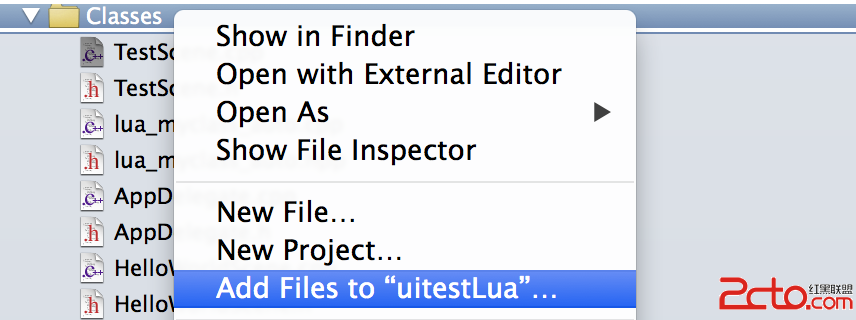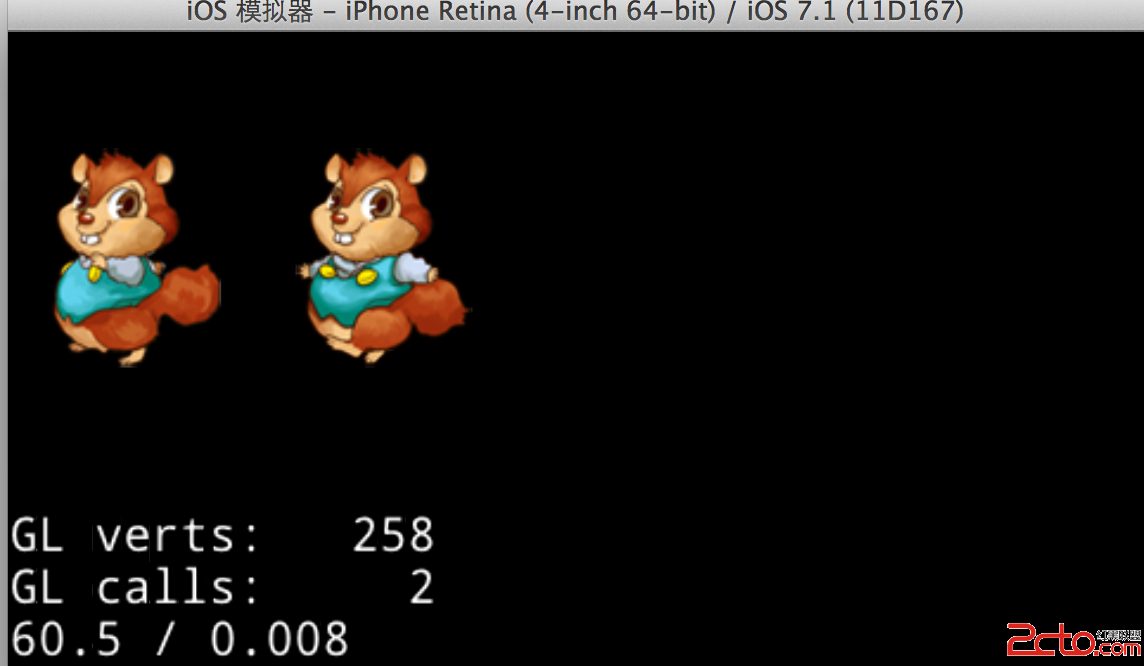這裡記錄下我實現Lua綁定的全過程。
准備工作:
1、創一個一個Lua的2dx工程。(這個網上已經有好多了)
2、創一個C++類。
TestScene.h 這個只是一個簡單的場景
//
// TestScene.h
// uitestLua
//
// Created by 杜甲 on 14-5-17.
//
//
#ifndef __uitestLua__TestScene__
#define __uitestLua__TestScene__
#include cocos2d.h
USING_NS_CC;
class TestScene :public Layer{
public:
static Scene* createScene();
virtual bool init();
CREATE_FUNC(TestScene);
};
#endif /* defined(__uitestLua__TestScene__) */
TestScene.cpp
//
// TestScene.cpp
// uitestLua
//
// Created by 杜甲 on 14-5-17.
//
//
#include TestScene.h
Scene* TestScene::createScene()
{
auto layer= TestScene::create();
auto scene = Scene::create();
scene->addChild(layer);
return scene;
}
bool TestScene::init()
{
bool bRet = false;
do {
CC_BREAK_IF(!Layer::init());
auto sprite = Sprite::create(res/dog.png);
sprite->setPosition(Point(100, 200));
addChild(sprite);
bRet = true;
} while (0);
return bRet;
}
步驟:
1、綁定基本變量:這個按照readme中的去做,注意NDK要用:r9b一定要用這個。
2、編譯自己的ini文件。這個需要參照其他的ini。我參考的是cocos2dx_physics.ini
自己創建一個文本文件將cocos2dx_physics.ini中的內容全部粘過來,之後我們只需要修改幾個地方。
下面是修改好的腳本:
testscene.ini
[testscene]
# the prefix to be added to the generated functions. You might or might not use this in your own
# templates
prefix = testscene
# create a target namespace (in javascript, this would create some code like the equiv. to `ns = ns || {}`)
# all classes will be embedded in that namespace
target_namespace = cc
android_headers = -I%(androidndkdir)s/platforms/android-14/arch-arm/usr/include -I%(androidndkdir)s/sources/cxx-stl/gnu-libstdc++/4.7/libs/armeabi-v7a/include -I%(androidndkdir)s/sources/cxx-stl/gnu-libstdc++/4.7/include
android_flags = -D_SIZE_T_DEFINED_
clang_headers = -I%(clangllvmdir)s/lib/clang/3.3/include
clang_flags = -nostdinc -x c++ -std=c++11
cocos_headers = -I%(cocosdir)s/cocos -I%(cocosdir)s/cocos/2d -I%(cocosdir)s/cocos/base -I%(cocosdir)s/cocos/physics -I%(cocosdir)s/cocos/2d/platform -I%(cocosdir)s/cocos/2d/platform/android -I%(cocosdir)s/cocos/math/kazmath -I%(cocosdir)s/cocos/physics
cocos_flags = -DANDROID -DCOCOS2D_JAVASCRIPT -DCC_USE_PHYSICS=1
cxxgenerator_headers =
# extra arguments for clang
extra_arguments = %(android_headers)s %(clang_headers)s %(cxxgenerator_headers)s %(cocos_headers)s %(android_flags)s %(clang_flags)s %(cocos_flags)s %(extra_flags)s
# what headers to parse
headers = /Users/tokou/WORK/5-Cocos2dx/Project/UI/uitestLua/frameworks/runtime-src/Classes/TestScene.h
# what classes to produce code for. You can use regular expressions here. When testing the regular
# expression, it will be enclosed in ^$, like this: ^Menu*$.
classes = TestScene
# what should we skip? in the format ClassName::[function function]
# ClassName is a regular expression, but will be used like this: ^ClassName$ functions are also
# regular expressions, they will not be surrounded by ^$. If you want to skip a whole class, just
# add a single * as functions. See bellow for several examples. A special class name is *, which
# will apply to all class names. This is a convenience wildcard to be able to skip similar named
# functions from all classes.
skip =
rename_functions =
rename_classes =
# for all class names, should we remove something when registering in the target VM?
remove_prefix =
# classes for which there will be no parent lookup
classes_have_no_parents =
# base classes which will be skipped when their sub-classes found them.
base_classes_to_skip = Layer
# classes that create no constructor
# Set is special and we will use a hand-written constructor
abstract_classes =
# Determining whether to use script object(js object) to control the lifecycle of native(cpp) object or the other way around. Supported values are 'yes' or 'no'.
script_control_cpp = no
[testscene] prefix = testscene target_namespace = headers = /Users/tokou/WORK/5-Cocos2dx/Project/UI/uitestLua/frameworks/runtime-src/Classes/TestScene.h --這裡我用的是絕對路徑用,如果用之前的變量路徑找不到 TestScene.h classes = TestScene skip = abstract_classes =
只要修改命令參數就OK。
將:
cmd_args = {'cocos2dx.ini' : ('cocos2d-x', 'lua_cocos2dx_auto'),
'cocos2dx_extension.ini' : ('cocos2dx_extension', 'lua_cocos2dx_extension_auto'),
'cocos2dx_ui.ini' : ('cocos2dx_ui', 'lua_cocos2dx_ui_auto'),
'cocos2dx_studio.ini' : ('cocos2dx_studio', 'lua_cocos2dx_studio_auto'),
'cocos2dx_spine.ini' : ('cocos2dx_spine', 'lua_cocos2dx_spine_auto'),
'cocos2dx_physics.ini' : ('cocos2dx_physics', 'lua_cocos2dx_physics_auto'),
}
cmd_args = {'testscene.ini': ('testscene','lua_testscene_auto') }
之後打開命令行工具:
cd 到tolua文件夾
./genbindings_testscene.py
編譯就完成了。
我們接下來使用以下我們自己的類。
首先,導入我們編譯出來的.hpp和.cpp文件。他們在哪裡呢?
見下圖:
1、

2、
之後在AppDelegate.cpp
加入頭文件:
#include lua_testscene_auto.hpp
在 bool AppDelegate::applicationDidFinishLaunching()中加入如下代碼。
auto engine = LuaEngine::getInstance();
ScriptEngineManager::getInstance()->setScriptEngine(engine);
engine->executeScriptFile(src/test2.lua);
/***************這裡加入如下代碼*/
register_all_testscene(engine->getLuaStack()->getLuaState());
.lua
scene = TestScene:createScene() cc.Director:getInstance():runWithScene(scene)
